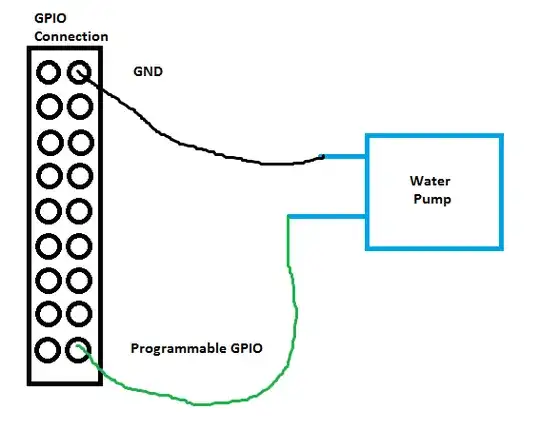So, I would like to connect a water pump to my Pi and programatically turn the pump on and off.
I am looking at this pump: http://www.cooking-hacks.com/immersible-pump-water-tube-for-open-garden-and-open-aquarium
It says "3.5-12V DC input voltage".
Does this mean that setting this up would be as easy as connecting the positive end of the pump to a programmable GPIO pin (and have then negative side going to ground) and setting the pin high to turn the pump on and low to turn it off? Here is a quick diagram I (very quickly) threw together.

I am sure this is too simple because most people i see are using all sorts of extras like resistors or motor driver chips, etc.
Main Question: So is it as simple as I think? If not, could some explain why it won't work this way?
Bonus Question: If not, could someone explain how I would hook it up?
In Reference to Question Powering a 3-12V water pump on raspberry pi
I saw this question and couldn't quite make sense of what the OP was asking. In this scenario I have no relay or a breadboard power supply (unless the OP is referring to getting power from one of the GPIO pins). What really threw me off though was the sentence "Is it possible, to rspi to breadboard power supply usb, and a pump to it's 5V output?"
I am not sure if rspi is a type-o or an acronym but I don't know what that means. And I am not sure what a breadboard power supply usb is either or if it is even one thing. And wouldn't plugging the pump into the 5V output just constantly turn on the pump?
So I did see this question I just wasn't really sure how much of it was applicable.
It would be awesome if someone could explain/edit that question (That is if I'm not just being stupid and not understanding his question).